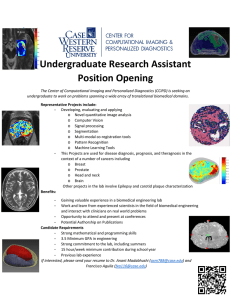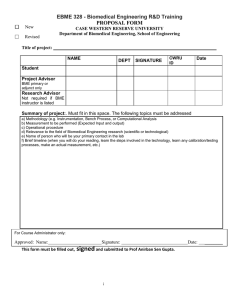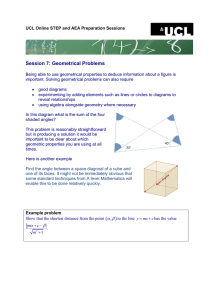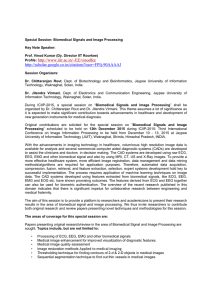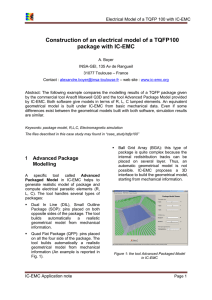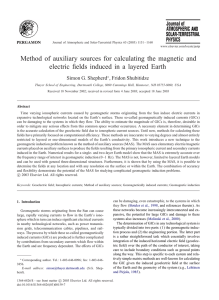Abstract Applying mathematical mo
advertisement
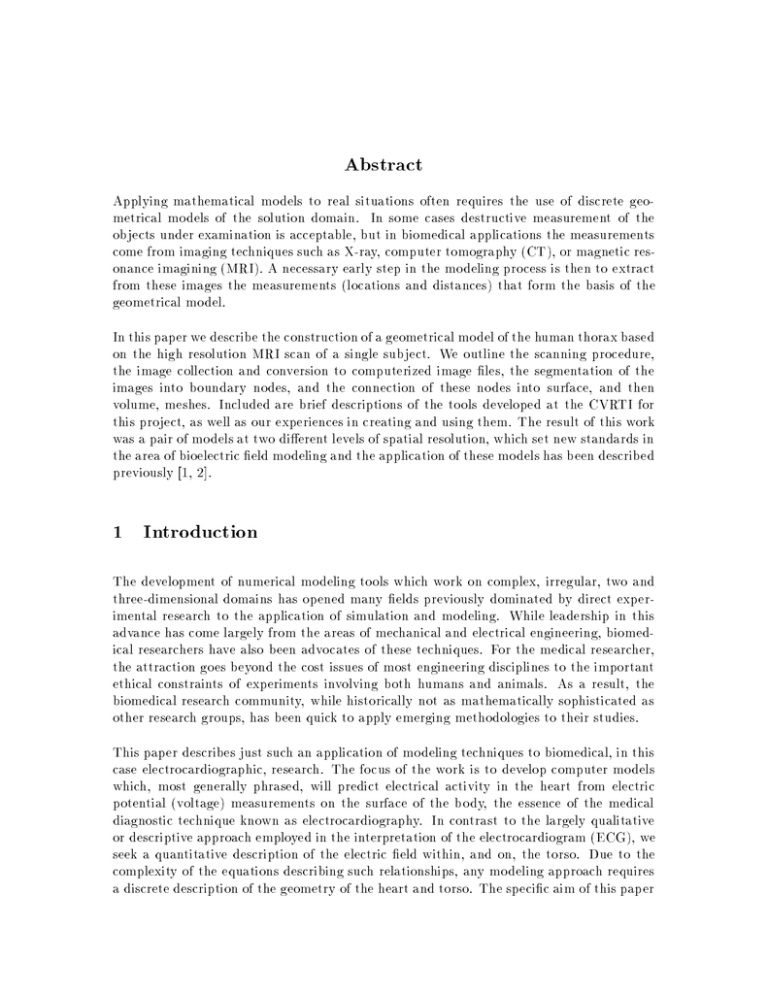
Abstract Applying mathematical models to real situations often requires the use of discrete geometrical models of the solution domain. In some cases destructive measurement of the objects under examination is acceptable, but in biomedical applications the measurements come from imaging techniques such as X-ray, computer tomography (CT), or magnetic resonance imagining (MRI). A necessary early step in the modeling process is then to extract from these images the measurements (locations and distances) that form the basis of the geometrical model. In this paper we describe the construction of a geometrical model of the human thorax based on the high resolution MRI scan of a single subject. We outline the scanning procedure, the image collection and conversion to computerized image les, the segmentation of the images into boundary nodes, and the connection of these nodes into surface, and then volume, meshes. Included are brief descriptions of the tools developed at the CVRTI for this project, as well as our experiences in creating and using them. The result of this work was a pair of models at two dierent levels of spatial resolution, which set new standards in the area of bioelectric eld modeling and the application of these models has been described previously [1, 2]. 1 Introduction The development of numerical modeling tools which work on complex, irregular, two and three-dimensional domains has opened many elds previously dominated by direct experimental research to the application of simulation and modeling. While leadership in this advance has come largely from the areas of mechanical and electrical engineering, biomedical researchers have also been advocates of these techniques. For the medical researcher, the attraction goes beyond the cost issues of most engineering disciplines to the important ethical constraints of experiments involving both humans and animals. As a result, the biomedical research community, while historically not as mathematically sophisticated as other research groups, has been quick to apply emerging methodologies to their studies. This paper describes just such an application of modeling techniques to biomedical, in this case electrocardiographic, research. The focus of the work is to develop computer models which, most generally phrased, will predict electrical activity in the heart from electric potential (voltage) measurements on the surface of the body, the essence of the medical diagnostic technique known as electrocardiography. In contrast to the largely qualitative or descriptive approach employed in the interpretation of the electrocardiogram (ECG), we seek a quantitative description of the electric eld within, and on, the torso. Due to the complexity of the equations describing such relationships, any modeling approach requires a discrete description of the geometry of the heart and torso. The specic aim of this paper

